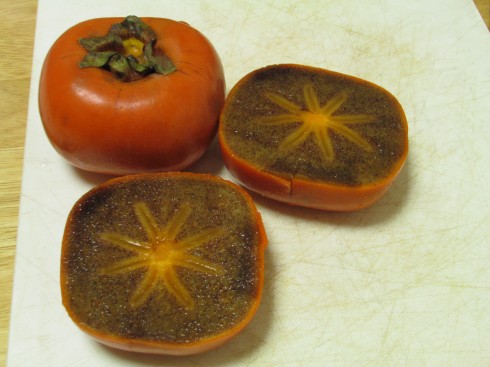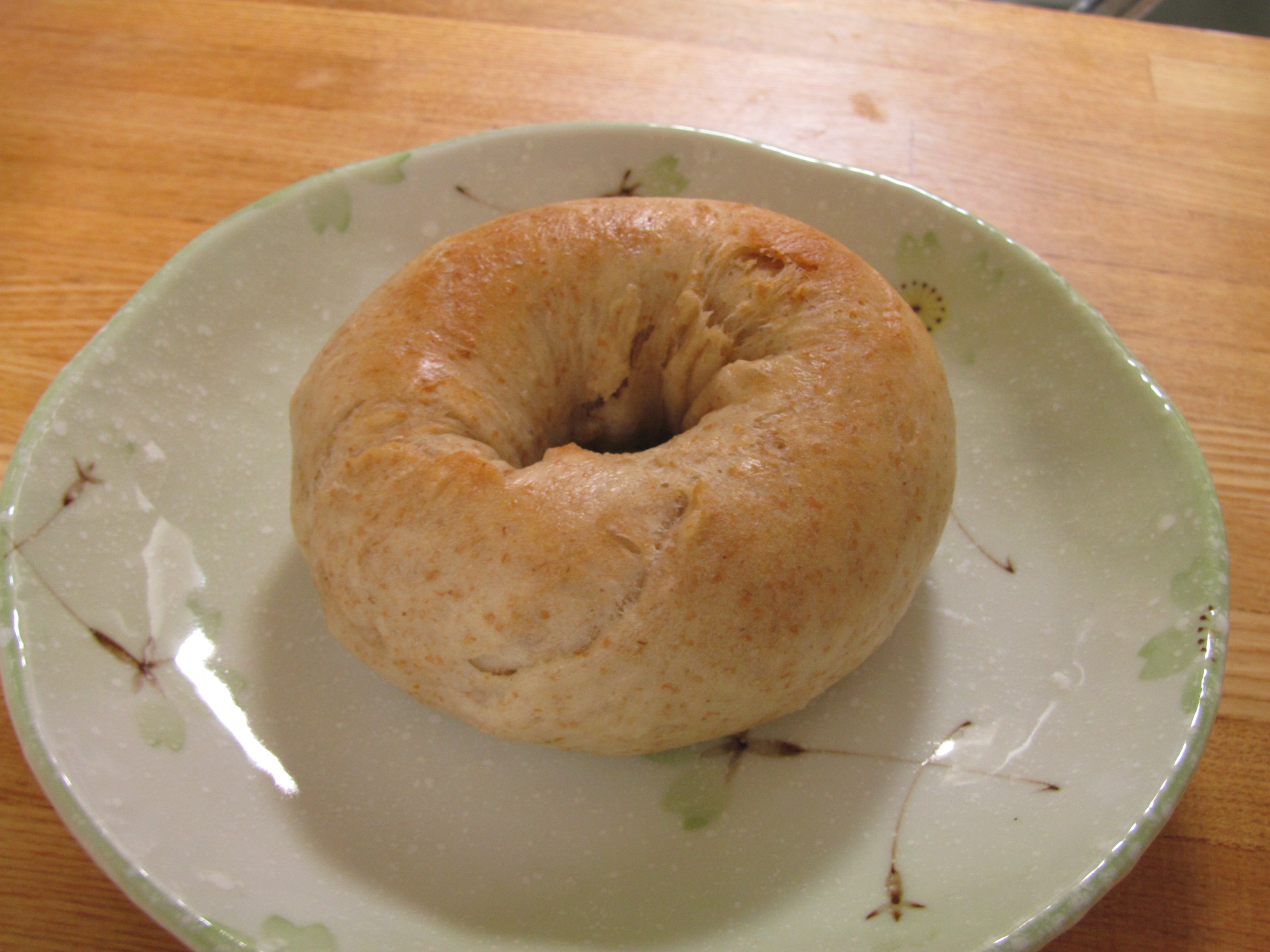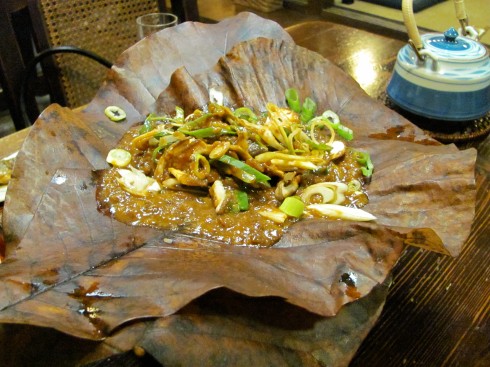I’ll Make It Myself: Flour Tortillas (Bread Revolution Series)
L.M. Zoller (CIR Ishikawa-ken, Anamizu, 2009-11) is the editor of The Ishikawa JET Kitchen: Cooking in Japan Without a Fight. A writer and web administrator for The Art of Japan: Kanazawa and Discover Kanazawa, ze also writes I’ll Make It Myself!, a blog about food culture in Japan, and curates The Rice Cooker Chronicles, a series of essays by JETs and JET alumni on the theme of cooking/eating and being alone in Japan.
New Rice Cooker Chronicles submissions always welcome. Just e-mail it to jetwit [at] jetwit.com.
More Bread Revolution and Guide to Flour.
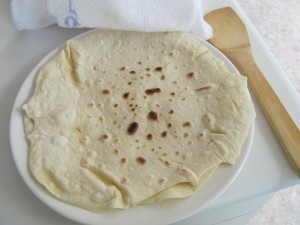
TexMex/Southwestern/Mexican foods were something I purchased from the grocery or at restaurants in the US, missed sorely in Japan, and was convinced I couldn’t make it myself. If I found salsa in a jar, I couldn’t find chips, so what was the point? Avocados weren’t something I could get my town easily, and forget cilantro or jalapeños. I gave up on my dream of enjoying these foods in Japan, but luckily Cheruko didn’t and put together a fantastic fajita spread for an international cooking lesson.
I’ll Make It Myself!: Easy Whole-Wheat Pizza Dough (Bread Revolution Series)
L.M. Zoller (CIR Ishikawa-ken, Anamizu, 2009-11) is the editor of The Ishikawa JET Kitchen: Cooking in Japan Without a Fight. A writer and web administrator for The Art of Japan: Kanazawa and Discover Kanazawa, ze also writes I’ll Make It Myself!, a blog about food culture in Japan, and curates The Rice Cooker Chronicles, a series of essays by JETs and JET alumni on the theme of cooking/eating and being alone in Japan.
New Rice Cooker Chronicles submissions always welcome. Just e-mail it to jetwit [at] jetwit.com.
One thing that always amazes me when I return to the US is the sheer amount of choice one has about food. Order a pizza in the US and you can usually choose whole-wheat or white crust (sometimes even gluten-free); thick or thin crust; marinara sauce or white sauce; any combination of toppings. With the sheer amount of kinds of pizzerias in towns like Ann Arbor–everything from national chains to Silvio’s organic pizza–the sky was the limit.

I know most of my posts start with me gushing about Ann Arbor, then complaining about Japan, then resolving into my resolution to make it myself, but going from choosing the tiniest details of my pizza to angrily eyeing the corn-and-mayo pizza on a rare trip to Coco’s actually wasn’t that shocking until I came back to the US on business in the winter.
I’ll Make It Myself!: “Bread Revolution: Flour”
L.M. Zoller (CIR Ishikawa-ken, Anamizu, 2009-11) is the editor of The Ishikawa JET Kitchen: Cooking in Japan Without a Fight. A writer and web administrator for The Art of Japan: Kanazawa and Discover Kanazawa, ze also writes I’ll Make It Myself!, a blog about food culture in Japan, and curates The Rice Cooker Chronicles, a series of essays by JETs and JET alumni on the theme of cooking/eating and being alone in Japan.
New Rice Cooker Chronicles submissions always welcome. Just e-mail it to jetwit [at] jetwit.com.
One of the biggest challenges–and triumphs– for me during these 2.5 years living in Japan has been creating bread products I could easily purchase back in the US: pitas, tortillas, flatbread, pizza dough. I experimented (usually disastrously) with a few things in year 1, namely pizza dough, which was passable but not fantastic, and tea bread, which refused to cook through no matter how I reduced the recipe or what device in which I baked it.

My first success was whole-wheat soda bread. Pizza dough took two years and five different recipes. Tortillas and pitas, which I was stupidly convinced couldn’t be made at home until Cheruko of Hokuriku Expat Kitchen decided they could, turned out to be incredibly simple. I, like many Americans, thought bread-making was some sort of epic process, a choice between hours of kneading and rising and punching dough or investing in a breadmaker that would take up precious storage space. It’s really not that bad. I’ll speak more on this later with each recipe’s time-commitment information, but I full work-time, work out, have an active social life and hobbies, and I still have time for bread-making. The rising time, depending on the recipe, is often ideal for cooking the rest of a meal, enjoying a TV show or book, or even an evening trip to the gym for the longer risers.
So, now that you’re less worried about OMG BREAD, let’s get started on building your expat bread factory. First, we need to have a chat about types of flour.
I’ll Make It Myself!: “Roasted Vegetables and My Obsession with 安納芋”
L.M. Zoller (CIR Ishikawa-ken, Anamizu, 2009-11) is the editor of The Ishikawa JET Kitchen: Cooking in Japan Without a Fight. A writer and web administrator for The Art of Japan: Kanazawa and Discover Kanazawa, ze also writes I’ll Make It Myself!, a blog about food culture in Japan, and curates The Rice Cooker Chronicles, a series of essays by JETs and JET alumni on the theme of cooking/eating and being alone in Japan.
New submissions always welcome. Just e-mail it to jetwit [at] jetwit.com.

Orange sweet potatoes, ubiquitous in the US, are often nowhere to be found in Ishikawa. Depending on where you are in the prefecture, you can usually locate some in one brief part of late winter in the local-vegetable section of the grocery store with the Noto– and Kaga Yasai (heirloom vegetables from Noto [northern Ishikawa] and Kaga [central-southern Ishikawa]). This March, I found some “Kabocha Imo” (“kabocha squash potato,” かぼちゃ芋), a Noto Yasai, at Marue, and I also found a large bag of annôimo (安 納芋) in the basement grocery stores in the department store M’ZA. Orange sweet potatoes are not as cheap as I remember them being back home during my student days, but they’re every bit as delicious.
CLICK HERE to read the full post.
I’ll Make It Myself!: “Japanese Street Food and Foodpia Land 2012 (フードピアランド2012)”
L.M. Zoller (CIR Ishikawa-ken, Anamizu, 2009-11) is the editor of The Ishikawa JET Kitchen: Cooking in Japan Without a Fight. A writer and web administrator for The Art of Japan: Kanazawa and Discover Kanazawa, ze also writes I’ll Make It Myself!, a blog about food culture in Japan, and curates The Rice Cooker Chronicles, a series of essays by JETs and JET alumni on the theme of cooking/eating and being alone in Japan.
New submissions always welcome. Just e-mail it to jetwit [at] jetwit.com.
I’ve noticed an increased interest by foreign bloggers and media regarding Japan’s (read: Tokyo, Kyoto) street food culture in the last month, and as I was at a large food fair in Kanazawa, I figured it was time to add my comments and photos to the table.

CLICK HERE to read the full post.
I’ll Make It Myself: “Kabocha-Stuffed Okonomiyaki”
L.M. Zoller (CIR Ishikawa-ken, Anamizu, 2009-11) is the editor of The Ishikawa JET Kitchen: Cooking in Japan Without a Fight. A writer and web administrator for The Art of Japan: Kanazawa and Discover Kanazawa, ze also writes I’ll Make It Myself!, a blog about food culture in Japan.

Every food blogger with an interest in Japanese food is required by law to have a post on okonomiyaki, so today, I’m going to show you how to make my favorite version, which is stuffed with my favorite vegetable, kabocha squash.
Okonomiyaki (henceforth not italicized) is sometimes described as a savory pancake or as a Japanese pizza. What it actually entails is a batter made mainly of flour, egg, water, and baking powder, which is mixed with finely chopped cabbage and seasonings. To this batter, one adds meat or vegetable “toppings” (hence the pizza comparison) to one’s liking (hence the name, which could be translated as the “As You Like It Cooked Item”). This mixture is cooked in a frying pan or on a griddle and topped with okonomi sauce, mayonnaise, nori (seaweed), and bonito flakes.
CLICK HERE to read the full post.
I’ll Make It Myself!: “Flexitarian: Spicy Fava Beans and Pork Stir-fry”
L.M. Zoller (CIR Ishikawa-ken, Anamizu, 2009-11) is the editor of The Ishikawa JET Kitchen: Cooking in Japan Without a Fight. A writer and web administrator for The Art of Japan: Kanazawa and Discover Kanazawa, ze also writes I’ll Make It Myself!, a blog about food culture in Japan.
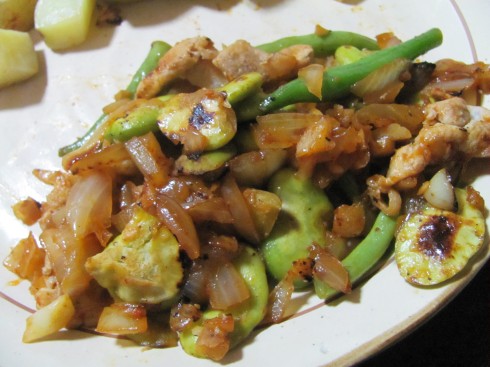
Ishikawa is a good source of locally-raised pork, which I discovered when I set out to make today’s recipe. Fava beans, sora mame(空豆), are all over Kanazawa right now (though my vegetable almanac says they are a late spring bean), and they really compliment the sweet onions and spicy pork in this stir-fry.
CLICK HERE to read the full post.
I’ll Make It Myself!: “Hîragi, Shirakawa-go”
L.M. Zoller (CIR Ishikawa-ken, Anamizu, 2009-11) is the editor of The Ishikawa JET Kitchen: Cooking in Japan Without a Fight. A writer and web administrator for The Art of Japan: Kanazawa and Discover Kanazawa, ze also writes I’ll Make It Myself!, a blog about food culture in Japan.

When I visited Shirakawa-go over the long weekend in January, I found Hîragi, a cute restaurant along the snow-covered the vehicle-access road to the lookout point in Ogimachi, Shirakawa-go. I was intrigued, of course, because one of my favorite kanji is 柊 (hîragi), holly, because the radicals mean tree-winter. What sealed the deal was the menu: I wanted to introduce my friends to hôba miso yaki(朴葉味噌焼き), and they wanted to try Hida beef (飛騨牛).
CLICK HERE to read the full post.
I’ll Make It Myself!: “Minoh Brewery and Beer Belly, Osaka”
L.M. Zoller (CIR Ishikawa-ken, Anamizu, 2009-11) is the editor of The Ishikawa JET Kitchen: Cooking in Japan Without a Fight. A writer and web administrator for The Art of Japan: Kanazawa and Discover Kanazawa, ze also writes I’ll Make It Myself!, a blog about food culture in Japan.
After several trips to the brewpub Beer Belly and to the actual Minoh Brewery, it’s about time I got around to reviewing my absolute favorite beer in Japan: Minoh Beer (箕面ビール), which operates from Minoh, Osaka. Readers of my blog know that I love craft beers, and also that finding a really good dark beer in Japan is a huge challenge.
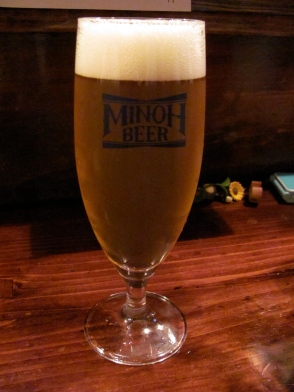
CLICK HERE to read the full post.
I’ll Make It Myself!: “The Wrath of the Kitchen God”
L.M. Zoller (CIR Ishikawa-ken, Anamizu, 2009-11) is the editor of The Ishikawa JET Kitchen: Cooking in Japan Without a Fight. A writer and web administrator for The Art of Japan: Kanazawa and Discover Kanazawa, ze also writes I’ll Make It Myself!, a blog about food culture in Japan.
While working on a translation about osechi ryôri, the Japanese New Year’s meal, today, I came across a passage about how the meal is prepared in advance of the holidays to avoid using the cooking fire. From a practical standpoint, not having to cook while one’s extended family is visiting gives the primary household cook a chance to relax and spend time with the family. The other reason given is that using the kitchen fire during the year-end period makes Kôjin (荒神) the Fire God angry.

CLICK HERE to read the full post.
I’ll Make It Myself — Spiced Persimmon Cake
L.M. Zoller (CIR Ishikawa-ken, Anamizu, 2009-11) is the editor of The Ishikawa JET Kitchen: Cooking in Japan Without a Fight. A writer and translator for The Art of Japan: Kanazawa and Discover Kanazawa, ze also writes I’ll Make It Myself!, a blog about food culture in Japan.
桃栗三年柿八年 (momo kuri sannnen kaki hachinen): it takes time to reap the fruit of one’s actions
(lit. [It takes] three years for [planted] peach and chestnut trees, eight for persimmons [to bear fruit]) (ことわざ学習室)
In late autumn and early winter (mid-Nov. to New Year), Omicho Market is awash in reds and oranges: strawberries, crabs, mikan, and persimmons. Before I moved to Japan, I had never seen a persimmon, though they seem to be available in California. There are two main varieties available in Japan: non-astringent (amagaki, 甘柿) and astringent (shibugaki, 渋柿). Fuyu (富有), the tomato-shaped variety, are a variety of sweet persimmon; they are dull orange, firm, and ready to eat when they are sold. The human-heart-shaped Hachiya (蜂屋), on the other hand, is very astringent until the skin turns reddish and the insides turn to jelly.*
I tend to eat Fuyu persimmons plain, but I was inspired by The Food Librarian‘s “Fuyu Persimmon Bundt” to try something new.
CLICK HERE to read the full post.
L.M. Zoller (CIR Ishikawa-ken, Anamizu, 2009-11) is the editor of The Ishikawa JET Kitchen: Cooking in Japan Without a Fight. A writer and translator for The Art of Japan: Kanazawa and Discover Kanazawa, ze also writes I’ll Make It Myself!, a blog about food culture in Japan.
Despite my oft-mentioned love of turkey, I had actually never cooked one until this year. In between being a super serious high-school student buried in a stack of books during the holidays and being a super-serious undergrad/grad student visiting from out of state, still buried in a stack of books and often rushing to get back home in time for holiday meals, I somehow seemed to have missed participating in the time-honored ritual of roasting a whole bird. This year marked my third consecutive Thanksgiving missed because I live in Japan, so rather than cry over my twitter feed of satisfied turkey-eaters in the US, I decided that my upgraded oven range was going to good use this year: we would host Thanksgiving, and, moreover, we would cook the turkey.
CLICK HERE to read the full post.
I’ll Make It Myself– ベーガル革命: Whole-Wheat Bagels
L.M. Zoller (CIR Ishikawa-ken, Anamizu, 2009-11) is the editor of The Ishikawa JET Kitchen: Cooking in Japan Without a Fight. A writer and translator for The Art of Japan: Kanazawa and Discover Kanazawa, ze also writes I’ll Make It Myself!, a blog about food culture in Japan.
もちもち (mochimochi): springy (texture)
Back in my language-school days at Midd, a New-Yorker foodie friend got on my case for eating the dining-hall bagels, telling me, “That’s not a bagel. That’s a piece of bread shaped like a bagel.” It’s probably for the best that he doesn’t find out what sort of things pass for “bagels” in Japan–it’s more like “cake shaped like a bagel.” Sometimes you can get passable bagels in the chain bakeries of Kanazawa, and Kaldi Coffee sometimes has imported frozen bagels, but they’re a bit pricey. Either way, it’s not just like popping over to Espresso Royale for a fresh Barry’s Bagel during an intense paper-writing session.
Bagels are one of those foods that seem very intimidating in part because of the multi-step process of making them: using yeast, letting the dough rise, shaping, boiling, and then finally baking; and in part because you really never need to make them in the US when they’re so widely available.
CLICK HERE to read the full post.
I’ll Make It Myself! — Travel Checklist: Local Foods in Hida-Takayama, Part 2
L.M. Zoller (CIR Ishikawa-ken, Anamizu, 2009-11) is the editor of The Ishikawa JET Kitchen: Cooking in Japan Without a Fight. A writer and translator for The Art of Japan: Kanazawa and Discover Kanazawa, ze also writes I’ll Make It Myself!, a blog about food culture in Japan.
Travel Checklist: Local Foods in Hida-Takayama, Part 2
To recap– In September, a friend and I traveled to Takayama, about 3 hours from Kanazawa. Located in Gifu near the border of Nagano, the old towns of Hida (飛騨) and Takayama (高山) are a food tourist’s paradise. Since the town is quite small, most of these foods can be found in stands or restaurants near Takayama Station and nearby morning markets.

CLICK HERE to read the full post.
I’ll Make It Myself – Travel Checklist: Local Foods in Hida-Takayama, Part 1
L.M. Zoller (CIR Ishikawa-ken, Anamizu, 2009-11) is the editor of The Ishikawa JET Kitchen: Cooking in Japan Without a Fight. A writer and translator for The Art of Japan: Kanazawa and Discover Kanazawa, ze also writes I’ll Make It Myself!, a blog about food culture in Japan.
Travel Checklist: Local Foods in Hida-Takayama, Part 1
In September, a friend and I traveled to Takayama, about 3 hours from Kanazawa. Located in Gifu near the border of Nagano, the old towns of Hida (飛騨) and Takayama (高山)are a food tourist’s paradise. Since the town is quite small, most of these foods can be found in stands or restaurants near Takayama Station and nearby morning markets.
CLICK HERE to read the full post.

